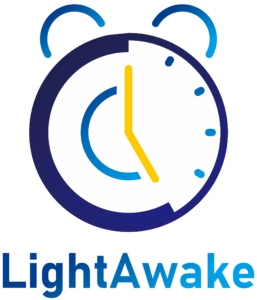White, Pink and Brown Noise
These sonic hues are helpful for sleep and relaxation
Did you know there’s a world of color beyond white noise? Just like the light spectrum, there’s a rainbow of sonic hues. White, pink, and brown noise are some of the most helpful for sleep and relaxation.
Every person can benefit from soothing noise that blocks out distractions. We live in a loud world with constant traffic, airplanes, and construction. It can be beneficial to play sounds that calm our nerves and quieten our minds at bedtime. Learn how white, pink, and brown noise can transform your sleep routine.
Sound Refresher
Before we cover colors, let’s remember that sound is a physical force. It has a frequency, often called pitch – this is the number of times the sound wave repeats in a second. Frequency is measured in hertz.
Sound also has amplitude, which is the strength of those sound waves. We register this as how loud or quiet a noise is. Amplitude is measured in decibels.
What’s cool about noise is that frequency and amplitude can happen in any combination. If you’ve ever had a hearing test, you’ve experienced this. It’s why there are different sound colors – each one is a distinctive mixture of amplitude and frequency.
White Noise
Do you enjoy the sound of a running fan when you sleep? Then you already know how comforting white noise is. It’s primarily used to cover up unwanted sounds.
“White noise is the auditory equivalent of white light – a combo of every frequency on the acoustic spectrum, which blend together to mask most small sounds regardless of their frequency,” explains CNN.
White noise has a consistent frequency but can be at different amplitudes. For example, a fan and vacuum are both white noise but only one is restful! Other sources of relaxing white noise include channel static, a steady breeze, or gentle rain. Some people even enjoy the hum of an air conditioner.
Pink Noise
Pink noise differs from white because it is intermittent. Because it has a lower frequency, it can feel gentler to some people. Examples include wind, mellow waves, lapping water, and rustling leaves.
Pink noise has only recently caught the attention of researchers, but their findings are encouraging. One small study of adults age 60-84 found improved memory, especially word recall, after a night playing pink noise. Another study of 40 individuals found pink noise promoted better sleep stability after a night of rest or a nap.
Brown Noise
Brown noise is often described as a deep rumble. If you love a roaring waterfall, pounding ocean surf, crashing waterfall, or rolling thunder, then brown noise is for you! It has lower frequencies than pink noise but a higher amplitude. It can even remind me of “space” sounds in TV shows or movies.
There’s No Right Color
Who can benefit from this vibrant world of white, pink, and brown noise? Pretty much anyone who wants to fall asleep peacefully! But especially people with:
- Anxious thoughts
- A high startle response
- Sleep disorders like insomnia
- Headaches or migraines
- Tinnitus
- A partner who snores or uses a CPAP machine
The key is to recognize everyone is different. Some people may find white noise distracting or brown noise is too low to hear. Experiment! The important thing is that you incorporate tranquil sound whenever your sleep ritual needs extra support.
Light Awake now includes options for white, pink, and brown noise! Use these relaxing family of sounds to fall asleep or block out distractions during your work day. See our options by downloading the app below from the Google Play Store or Apple App Store.



 Light Awake uses pulsating light to gently rouse you from sleep. There are no sharp, piercing noises that startle you awake. Its flashing light is designed to stimulate your circadian system and comfortably move your mind from slumber to consciousness. This is the only wakeup system that is based on the physiology of our eyes and brain.
Light Awake uses pulsating light to gently rouse you from sleep. There are no sharp, piercing noises that startle you awake. Its flashing light is designed to stimulate your circadian system and comfortably move your mind from slumber to consciousness. This is the only wakeup system that is based on the physiology of our eyes and brain.